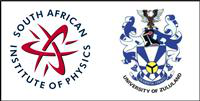Speaker
Main supervisor (name and email)<br>and his / her institution
PE NGOEPE, phuti.ngoepe@ul.ac.za
Materials Modelling Centre, University of Limpopo
Apply to be<br> considered for a student <br> award (Yes / No)?
No
Abstract content <br> (Max 300 words)
The self-consistent-charge density functional tight binding (SCC-DFTB) approach has been used to describe large scale systems with less computational cost than the density functional theory method [1]. DFTB+ has been used to develop a set of SCC-DFTB parameters for Pd-Pd and Ti-X (X = Ti, O) also considering O-O atomic pairs of elements. The SCC-DFTB parameterization has been performed to describe periodic systems Pd and TiO2 respectively. It was found that the structural properties obtained from the parameters were good. Comparison to the lattice parameter obtained from geometry optimization for bulk Pd and TiO2 was found to be within 0.1% with the available literature data [2-4]. The SSC-DFTB+ set of parameters obtained within this study have also been successful in describing the electronic properties of TiO2. The calculated electronic band structure of TiO2 yielded an energy band gap of 3.21 eV, in excellent agreement with the experimental value of 3.2 eV [5].
References
[1] A. F. Oliveira, G. Seitfert, T. Heine, H. A Duarte, J. Braz. Chem. Soc. 20 (2009) 1193
[2] D. Schebarchov and S. Hendy, Phys. Rev. B 73 (2006), 121402
[3] M. Horn, C.F. Schwerdtfeger and E.P.Z. Meagher, Kristallogr. 136 (3-4) (1972) 273
[4] G. Dolgonos, B. Aradi, N.H. Moreira and T. Frauenheim, J. Chem. Theory Comput. 6 (2010) 266
[5] F. Labat, P. Baranek, C. Domain, C. Minot and C. Adamo, J. Chem. Phys. 129 (2007) 154703
Would you like to <br> submit a short paper <br> for the Conference <br> Proceedings (Yes / No)?
Yes

